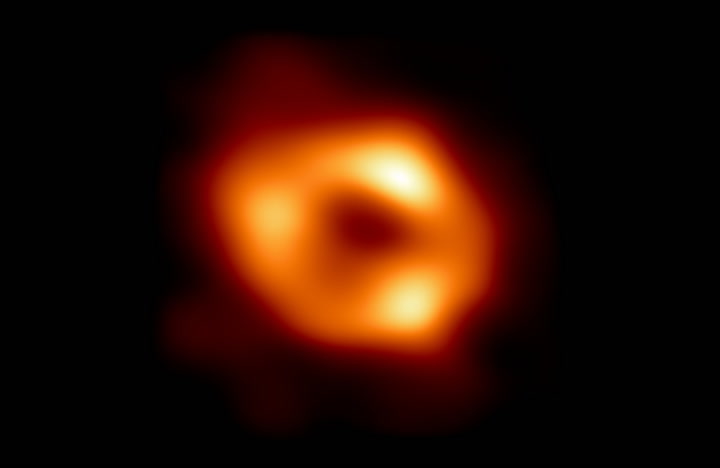Discovery of Sagittarius A*
Scientists have long known that there was a black hole at the heart of the Milky Way galaxy, which they’ve named Sagittarius A* — and for the first time ever, they’ve been able to photograph it.
If you’ve ever wondered what lies at the center of our massive, spiraling galaxy — you can actually see it. The Event Horizon Telescope (EHT), a groundbreaking project that connects radio telescope arrays around the world, has created a super-telescope nearly 6,200 miles across, just shy of the full diameter of Earth.
First Image of a Black Hole
The image presents a lumpy orange ring or doughnut — it may not seem like much, but this object is nearly 27,000 light-years away, making it incredibly challenging to capture. This visual representation showcases the hot gas that swirls around the black hole itself.
What we observe in the image of Sagittarius A* is a buildup of hot gas, known as the accretion disk, which orbits the black hole at the event horizon — the point of no return. Once any matter crosses this threshold, it is inevitably captured by the intense gravitational pull of the black hole.
Significance of the Findings
“We were stunned by how well the size of the ring agreed with predictions from Einstein’s Theory of General Relativity,” stated EHT Project Scientist Geoffrey Bower from the Institute of Astronomy and Astrophysics, Academia Sinica, in Taipei. “These unprecedented observations have significantly enhanced our understanding of the dynamics at the very center of our galaxy and provide new insights on how these massive black holes interact with their environment.”
:max_bytes(150000):strip_icc():format(webp)/black-hole-milky-way-BLACKHOLE0522-a786f6cec7f04e3fadd1094d8393652d.jpg)
The image of Sagittarius A* marks the second-ever photograph of a black hole captured by EHT. The first image was of M87*, situated at the center of the Messier 87 galaxy. Notably, while Sagittarius A* is considered to be on the smaller side of the supermassive black hole category, M87* is approximately 1,000 times more massive.
“Now we can study the differences separating these two supermassive black holes to obtain valuable insights into how this crucial process operates,” commented EHT scientist Keiichi Asada from the Institute of Astronomy and Astrophysics, Academia Sinica, in Taipei. “We have visuals for two black holes — one at the larger end and one at the smaller end of the supermassive black hole spectrum in the Universe — enabling us to further explore how gravity functions in these extreme conditions than ever before.”




